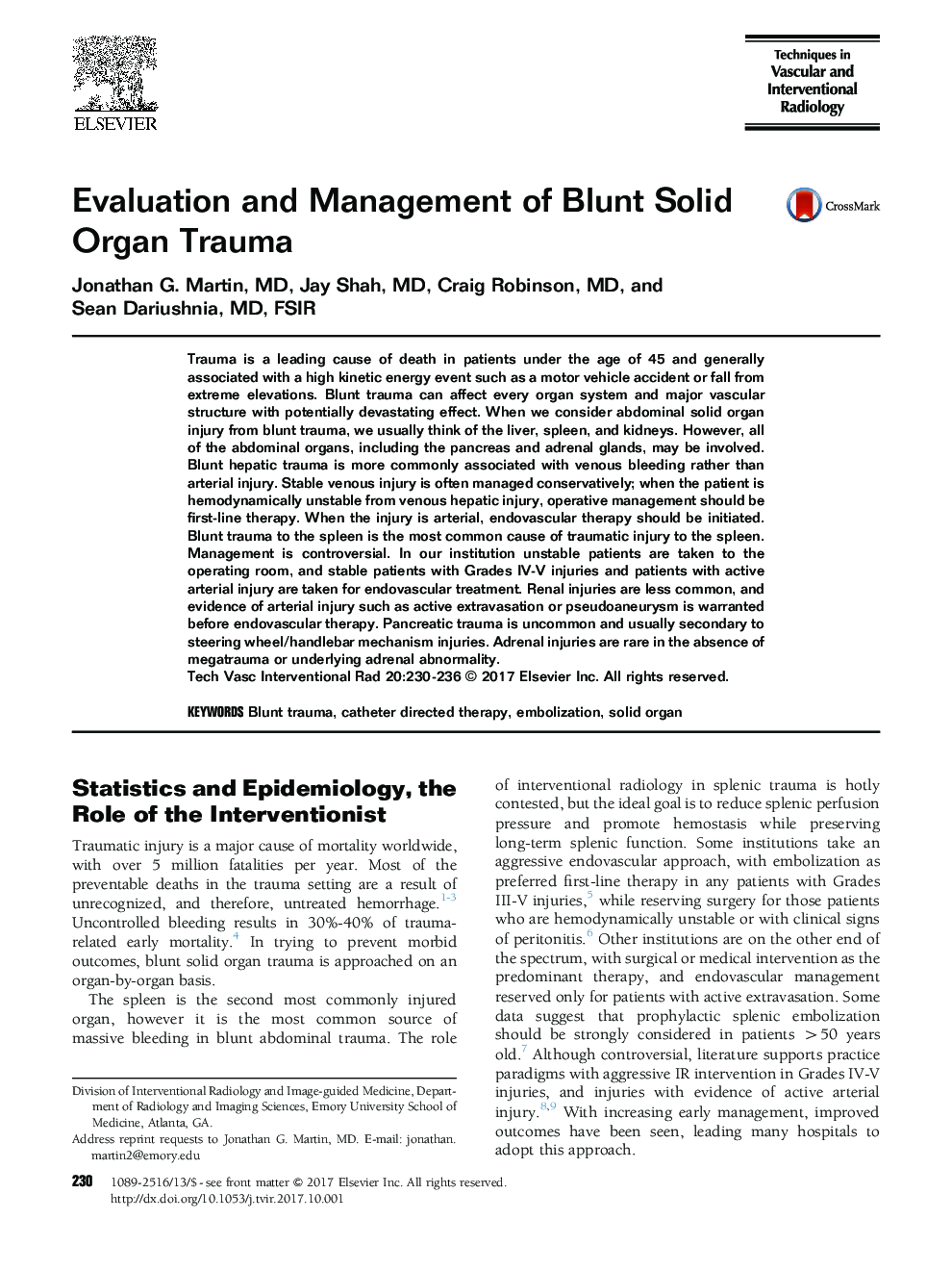| Article ID | Journal | Published Year | Pages | File Type |
|---|---|---|---|---|
| 8826243 | Techniques in Vascular and Interventional Radiology | 2017 | 7 Pages |
Abstract
Trauma is a leading cause of death in patients under the age of 45 and generally associated with a high kinetic energy event such as a motor vehicle accident or fall from extreme elevations. Blunt trauma can affect every organ system and major vascular structure with potentially devastating effect. When we consider abdominal solid organ injury from blunt trauma, we usually think of the liver, spleen, and kidneys. However, all of the abdominal organs, including the pancreas and adrenal glands, may be involved. Blunt hepatic trauma is more commonly associated with venous bleeding rather than arterial injury. Stable venous injury is often managed conservatively; when the patient is hemodynamically unstable from venous hepatic injury, operative management should be first-line therapy. When the injury is arterial, endovascular therapy should be initiated. Blunt trauma to the spleen is the most common cause of traumatic injury to the spleen. Management is controversial. In our institution unstable patients are taken to the operating room, and stable patients with Grades IV-V injuries and patients with active arterial injury are taken for endovascular treatment. Renal injuries are less common, and evidence of arterial injury such as active extravasation or pseudoaneurysm is warranted before endovascular therapy. Pancreatic trauma is uncommon and usually secondary to steering wheel/handlebar mechanism injuries. Adrenal injuries are rare in the absence of megatrauma or underlying adrenal abnormality.
Keywords
Related Topics
Health Sciences
Medicine and Dentistry
Radiology and Imaging
Authors
Jonathan G. MD, Jay MD, Craig MD, Sean MD, FSIR,
